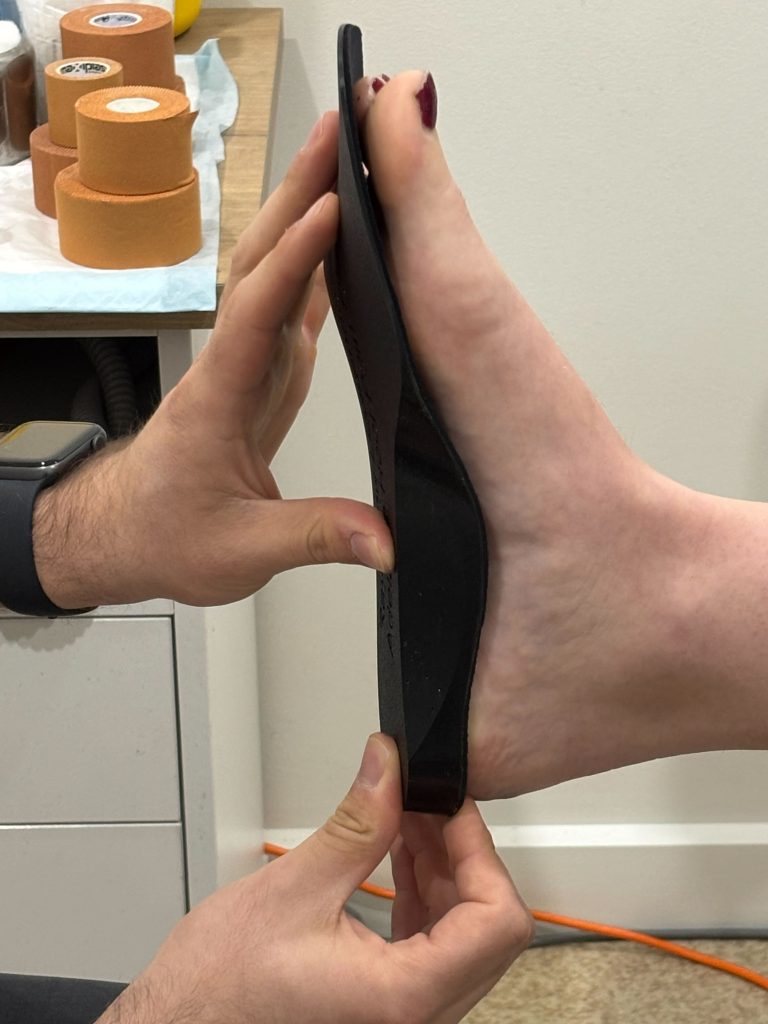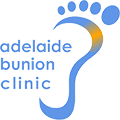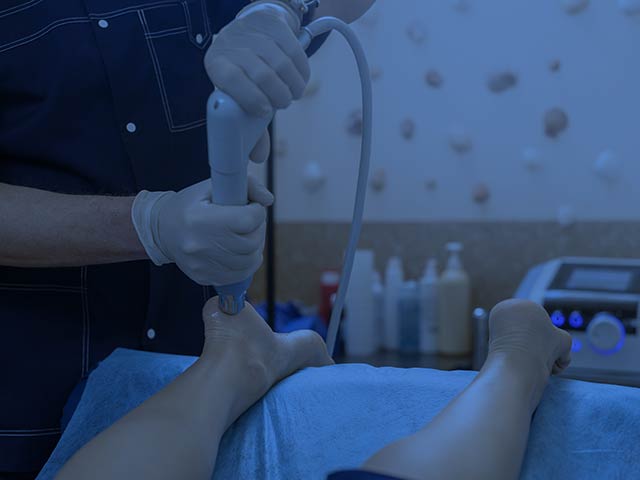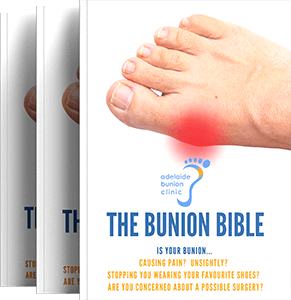Bunions (hallux valgus) are common foot deformities that can cause discomfort, difficulty fitting shoes, and changes in the way you walk. At Adelaide Bunion Clinic, we know that surgery isn’t always necessary. A non-surgical approach using custom orthotics, alongside footwear modifications and podiatric support, can relieve pain and slow the progression of bunions.
What Exactly Is a Bunion?
A bunion develops when the big toe drifts towards the second toe, causing the joint at its base to shift outwards and form a bony bump. This misalignment often leads to swelling, inflammation and soreness when walking or wearing tight shoes.
Over time, the soft tissues and bones around the joint adapt to this position, making the bunion appear more prominent and sometimes causing secondary issues like hammertoes or calluses.
Why Do Bunions Develop?
Bunions usually result from several factors working together:
- Foot mechanics such as flat feet or excessive pronation, which increase joint stress.
- Narrow or high-heeled shoes, forcing the toes into unnatural positions.
- Inherited structure or joint laxity that predisposes the foot to misalignment.
- Prolonged standing or walking, especially on hard surfaces or in unsupportive footwear.
Because no single cause is responsible, effective care must address both foot structure and lifestyle factors.

How Orthotics Help With Bunions
Orthotics do not “fix” a bunion, but they play a vital role in reducing pain, improving alignment, and supporting the foot’s natural mechanics. At Adelaide Bunion Clinic, our podiatrists design custom orthotics to:
- Redistribute pressure across the forefoot, easing load on the big-toe joint.
- Support the arch to improve alignment and control pronation.
- Provide cushioning to reduce joint irritation and friction.
- Enhance comfort and stability during daily activity.
By improving how the foot functions, orthotics help relieve pain and may slow further joint deviation, especially in mild to moderate bunions.
What the Evidence Shows
Current research supports orthotic use as an effective conservative treatment for managing symptoms associated with bunions. Studies have found that:
- Orthotics can reduce pressure beneath the first metatarsal head.
- Toe spacers and foot supports may assist in decreasing joint strain.
- Combining orthotics with footwear modification enhances comfort and mobility.
However, orthotics are not a cure; they work best as part of a comprehensive podiatric care plan that also includes exercise, footwear adjustments and monitoring.
Our Approach at Adelaide Bunion Clinic
Every bunion is unique, which is why we tailor every treatment. Our process includes:
- Detailed gait and pressure assessment to identify imbalances.
- Custom orthotic fabrication, using both 3D-printed and Voxelcare in-house systems.
- Footwear guidance, helping you choose supportive and wide-toe-box shoes.
- Adjunct therapies, such as padding, toe spacers, or mobilisation, where appropriate.
This holistic approach aims to relieve discomfort, improve function, and preserve mobility — all without surgery.
When to Consider Orthotics
Custom orthotics may be beneficial if you:
- Experience regular foot pain or soreness around the big-toe joint.
- Struggle to find shoes that fit comfortably.
- Notice increasing deformity or swelling.
- Want to manage your bunion conservatively and avoid surgery.
For severe bunions where the joint is rigid or significantly misaligned, surgical options may eventually be required — but orthotics remain an important part of post-operative care to prevent recurrence.
Final Thought
Bunion management doesn’t have to mean surgery. With custom orthotics, proper footwear and expert podiatric care, you can stay active, reduce pain and protect your foot health for the long term.
At Adelaide Bunion Clinic, we focus on evidence-based, personalised care to help you move comfortably and confidently — one step at a time.



